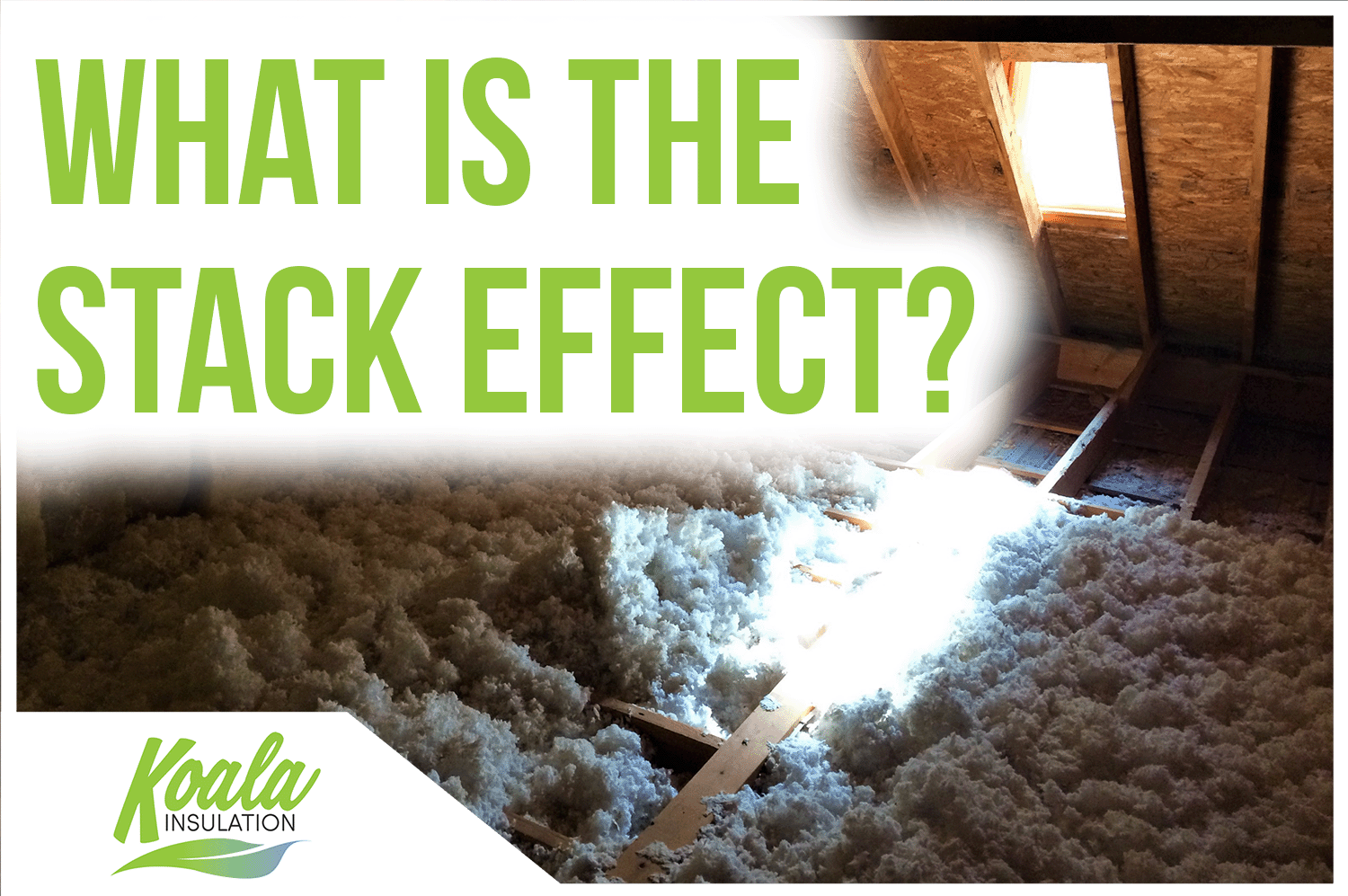How the Stack Effect Can Explain an Uncomfortable Home

What is the Stack Effect?
The stack effect is defined as the upward movement of warm air throughout a structure. As heat rises, it escapes through your ceilings and roof which is why your home’s attic insulation is so important. The material used in these areas will help significantly reduce the amount of heat lost by trapping it inside of your home. The primary function of the insulation throughout your home is to regulate heat transfer, which is the rate at which temperature enters and exits the building while also improving the overall climate control.
The stack effect is especially problematic during the colder months as you're attempting to keep the warm air in your home to keep the house at a comfortable temperature. If your home has poor coverage or old, damaged, and improperly installed insulation, the desired warmth will escape up through the attic; this is replaced by cold air, creating discomfort, drafts, and irregular temperatures. The cooler air enters small holes, cracks, and gaps throughout the building envelope that have poor insulation and air sealing. This can put additional strain on your HVAC system which will have to run more often to keep up with the thermostat and maintain the comfort of your home.
How to Check Your Home’s Insulation
One of the biggest mistakes homeowners can make is continuously raising the temperature on the thermostat, simply blaming the extreme weather outside when there may be poor insulation as the main problem in their home. Instead, if you notice higher energy bills, difficulty maintaining a controlled climate, and poor indoor air quality, you may need to take a trip to the attic. It’s important to prepare beforehand to ensure a safe inspection, so take the following tools and safety gear:
- A dust mask, gloves, and safety glasses
- A cap or hard hat for low ceiling and joist risks
- A flashlight or headlamp
- A tape measure
Many attics don’t have floorboards that will allow you to walk around like any other room in the house therefore you’ll need to look for beams to walk on when entering the attic space so you don’t risk falling through the ceiling. While being mindful of your foot placements, inspect the material around the floor and ceiling joists by measuring the depth of the insulation with a tape measure – if you have batt insulation, the R-value will be printed on the batts.
R-Value: How Insulation Reduces Heat Loss
The R-value or the resistance value of insulation is the numerical measurement of the material's ability to reduce the rate of heat transfer. The higher the R-value per inch results in the material being more effective at preventing heat loss. While there are many insulation materials that are considered effective for up to 15 years, there are a number of factors that can affect the deterioration rate. Moisture, pests, and other disturbances can damage the insulation and decrease its functionality, making it crucial that you keep up-to-date inspections of your insulation to ensure optimal efficiency.
The different types of insulation you have throughout the house will also change the type of R-value that your home has. For example, blown-in cellulose, a common choice to install along your attic floor, has an average R-value of 3.4 per inch. Fiberglass batts, on the other hand, can range from 3.1 to 3.7 per inch. When deciding on what type of insulation is best for your home, it's crucial to consider the various benefits and strengths of each type. R-value is just one feature of the material – moisture resistance, fire safety, and even if the material can irritate your skin are all additional considerations to think about when keeping your household's needs in mind.
Attic Insulation’s Impact on Your Home
Insulation and air sealing can reduce up to 40% of your regular heating and cooling costs when you have quality coverage and proper installation. The material in your attic is one of, if not the most, important areas to have regularly evaluated and updated due to the problem created by the stack effect. However, it does more than reduce the effects of this phenomenon and heat loss during the winter when heat attempts to rise up; the material also helps to prevent heat from entering during the summer, keeping your home nice and cool.
There are multiple factors that can drastically affect your home’s insulation requirements, creating unique needs from other houses in your state, region, and even the neighborhood – your climate zone, weather patterns, and household habits are all considerable variables and are important things to consider. For example, in northern homes, heat transfer outside the home is a more common issue during the winter while in southern climates, heat entering the home during the summer is a bigger problem. Consulting a professional is highly recommended in order to accurately determine your home's insulation needs to be based on climate, natural hazards, and more.
Learn from the Southwest Chicago Experts
Koala Insulation of Southwest Chicago has a team of industry experts that are trained and experienced in helping our community stay safe and comfortable. We're dedicated to helping our neighbors find cost-effective and energy-efficient solutions with the help of our free evaluations. With a detailed overview of your home's current condition, you can make informed decisions on updating the insulation and air sealing throughout the house while keeping your schedule and budget in mind. For more information on how insulation can improve your environment, contact Koala Insulation of Southwest Chicago today for a free evaluation.
Find Your Location


Get a quote


